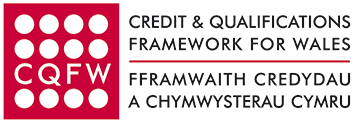| 1. |
Understand the main characteristics of autistic spectrum conditions |
|
| 1.1 | Explain why it is important to recognise that each person on the autistic spectrum has their own individual abilities, needs, strengths, gifts and interests | | 1.2 | Analyse the main diagnostic features of autistic spectrum conditions, commonly known as the “triad of impairments” | | 1.3 | Explain the meanings of the term ‘spectrum’ in relation to autism by reference to the notions of sub-conditions and individual variation within the autistic spectrum | | 1.4 | Describe the sensory and perceptual difficulties commonly experienced by individuals with an autistic spectrum condition | | 1.5 | Describe other conditions that may be associated with the autistic spectrum | | 1.6 | Describe how language and intellectual abilities vary between individuals and sub-groups across the spectrum |
|
| 2. |
Understand how autistic spectrum conditions can impact on the lives of individuals and those around them |
|
| 2.1 | Describe ways in which autism can impact on the everyday lives of individuals, their parents/carers and siblings, and others close to them | | 2.2 | Explain how autistic spectrum conditions can impact on individuals differently according to factors such as their gender, ethnicity and social, cultural and religious environment | | 2.3 | Explain how stereotyped views, discrimination and a lack of understanding of autistic spectrum conditions can compound the difficulties already experienced by individuals and their families | | 2.4 | Describe ways of helping an individual and/or their parent/carer/siblings/partner to understand their autistic spectrum condition |
|
| 3. |
Understand different theories and concepts about autism |
|
| 3.1 | Explain theories about autism related to:
• brain function and genetics
• psychology | | 3.2 | Explain why there are alternative choices of terminology used to describe the autism spectrum Describe the strengths and limitations of different types of terminology | | 3.3 | Explain the contributions of autism rights groups and the implications of their views for the support of individuals with an autistic spectrum condition | | 3.4 | Outline controversies concerning the search for cures and interventions for autistic spectrum conditions and for pre-natal diagnosis | | 3.5 | Explain why it is important to take into account individual differences in views of what is important in life, and how this might be especially important when supporting individuals on the autistic spectrum |
|
| 4. |
Understand the legal and policy framework that underpins good practice in the support of individuals with autistic spectrum conditions |
|
| 4.1 | Identify what legislation and national and local policy and guidance exists | | 4.2 | Explain what individuals or situations the legislation, national and local policy and guidance applies to | | 4.3 | Explain how the ways in which legislation and national and local policy and guidance apply to individuals on the autistic spectrum may differ according to their particular needs. |
|
| 5. |
Understand how to achieve effective communication with individuals with an autistic spectrum condition |
|
| 5.1 | Give examples of how “challenging behaviour” can be a way of expressing emotions where there are communication differences | | 5.2 | Describe methods and systems used to develop and support an individual’s communication | | 5.3 | Explain how to maximise the effectiveness of communication by making adaptations to own verbal and non-verbal communication style |
|
| 6. |
Understand how to support individuals with an autistic spectrum condition |
|
| 6.1 | Explain why it is important to establish a person-centred plan catering to an individual’s specific preferences and needs | | 6.2 | Explain why consultation with families/parents/carers is important in person-centred planning and support | | 6.3 | Describe different techniques and approaches to support individuals with an autistic spectrum condition to learn and develop new skills | | 6.4 | Explain how to reduce sensory overload, or increase sensory stimulation, by making adaptations to the physical and sensory environment |
|
